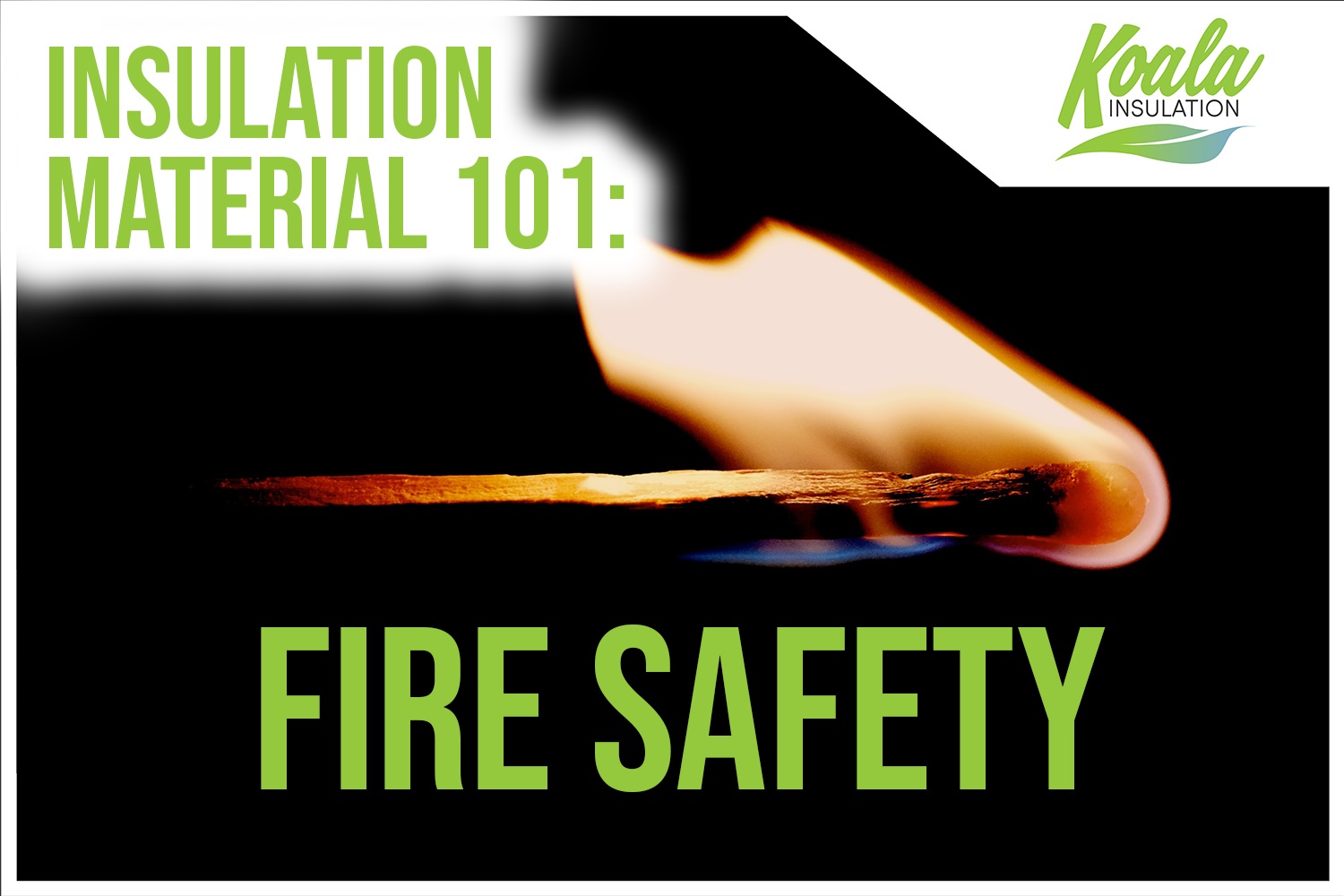
South Kansas City’s Insulation Material 101: Fire Safety
South Kansas City’s Insulation Material 101: Fire Safety
When it comes to protecting your home from potential fire hazards, it’s crucial to understand what material is going into the house. Proper installation, material type, and even building codes are all considerations that must be taken into account to ensure the safety of a building and its occupants. While regulations and building needs will differ with the region, climate, and even residential versus commercial building needs, our industry experts are familiar with the local building requirements and necessary fire safety additions.
Most insulation materials have inherent fire-resistant properties but several commonly installed types need to have additional chemicals or coatings applied to be considered fire safe. However, this shouldn't necessarily become a concern for homeowners. Instead, it's important to ensure your household is educated on the fire resistance of a material and how it applies to your climate, building, and coverage.
Flame Resistant VS Flame Retardant
While some people may use flame resistant and flame retardant interchangeably, the two terms have important differences when it comes to the material installed in your home. When you’re taking the time to choose the right insulation for your house, this basic distinction can have a major impact on your decision.
Flame resistance refers to materials that are inherently non-flammable. Their resistance to fire is already built into their chemical make-up. Flame retardant, on the other hand, means there has been an additional step in preparing the safety of the product. These materials have been chemically treated to have slow-burning or self-extinguishing properties. It's important to remember that while neither flame-resistant nor flame retardant material will necessarily extinguish a severe house fire, they can be a crucial barrier to slow the spread in many situations.
Fiberglass and Mineral Wool
When first understanding the difference between flame resistance and flame retardant materials, it's important to have a basic breakdown of each material. One of the most easily recognizable insulation materials for homeowners is fiberglass or mineral wool; you may remember your parents telling you not to eat or touch the fluffy stuff in the attic. These materials are considered fire-resistant, as they're naturally noncombustible, even if they've significantly deteriorated over time.
Fiberglass and mineral wool may have combustible facings (the kraft paper or foil that may cover batt insulation), but these are additionally covered with a code-approved fire barrier. When discussing options with your local insulation contractor, you should take note of where potentially hazardous materials are and understand the precautions - if any - that need to be taken into account in these areas.
Cellulose
Many houses that are looking for energy-efficient and cost-effective installations are going to tick off most boxes when they take a closer look at blown-in cellulose material. Cellulose insulation is made of 80% recycled material, with a majority of the material used often being recycled newspaper. While the recycled material is considered highly combustible, the material is chemically treated during production. This makes it a flame retardant material.
For some homeowners, the idea of flame retardant may be less appealing than a flame-resistant material. However, it's important to remember our note from before: neither type of material is going to entirely stop a hazardous house fire. Instead, both material types have their advantages in these kinds of accidents and should be considered side by side during your decision process. For more information on cellulose insulation and a controlled demonstration on its response to fire, check out Koala Insulation's video "Insulation 101: Cellulose Insulation.”
Spray Foam
A common myth about spray foam is that it's a significant fire hazard for your home because of the chemicals mixed together to create the installed material. While spray foam will ignite at about 700?, there are additional steps taken to make the material flame retardant. Once applied, spray foam is covered in an intumescent coating, often a type of paint. This creates a protective barrier that helps protect the material from high temperatures. For perspective, an intumescent coating is a commonly used product to cover many different combustible objects and materials in both residential and commercial buildings.
Learn More with South Kansas City’s Local Insulation Experts
There’s a lot to learn when it comes to insulation and the material’s impact on your home’s comfort and safety. Knowing more about h products installed in your house is another step in being an efficient homeowner. The insulation industry has had many safe and environmentally conscious advancements in the past ten years alone, including increasing the fire safety of materials and installation practices.
Our team at Koala Insulation of South Kansas City is dedicated to staying up to date on new advancements and safety procedures to bring the best service to our community. As such, insulation education is one of the top priorities of our company. If you’re interested in learning more about the impact of the material in your home, contact our team today for a free evaluation and consultation on your home’s current condition.
Ready to book your free insulation evaluation?
We have 3 convienant ways for you to get in touch
We Provide Insulation Services to the Following South Kansas City Areas
Kansas City, South Kansas City, Leawood, Overland Park, Lenexa, Prairie Village, Fairway, Shawnee, Raytown, Stillwell, Mission, Roeland Park, Merriam, Mission Hills, Waldo, Brookside, Plaza, Westport, Longview Lake, Lake Lotawana, Lee’s Summit, Grandview, Martin City, Belton, Raymore
Counties Served
Zip Code
66610, 64118, 66013, 66085, 66206, 66207, 66209, 66210, 66211, 66212, 66213, 66221, 66223, 66224, 66251, 66103, 66105, 66160, 66202, 66203, 66204, 66205, 66208, 66214, 66215, 66216, 66217, 66218, 66226, 64012, 64030, 64034, 64063, 64081, 64082, 64083, 64086, 64134, 64145, 64146, 64147, 64149, 64110, 64111, 64112, 64113, 64114, 64129, 64130, 64131, 64132, 64133, 64137, 64138, 66539
